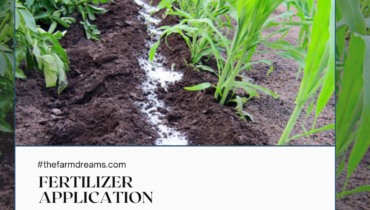In three simple steps, you may perform a simple and effective seed germination or viability test.
Don’t waste time sowing seeds that won’t grow. What guarantees do you have that you will germinate? To see if your seeds are still alive, perform a test.
What does it mean to have a seed that is viable?
Under the right circumstances, a vision can germinate.
Why is it necessary to do a seed germination or viability test?
Seeds are available from farms, seed shops, seed farmers, and other sources. After sowing these seeds in the field, the possibilities are that;
Only a few seeds will germinate, if they germinate at all. It was a total waste of time.
If the latter occurs, you must fill in or resow the entire field.
To avoid disappointment, do this short Seed Germination or Via, aptitude test, and you’ll know exactly what to do with your seeds in three days.
You’ll need about 100 seeds to test before you start seed germination or viability (depending on the toof tal amount seed to plant)
To keep track of things, use a transparent bottle. Some seeds, in order to germinate, may need to be exposed to light.
Water that is free of contaminants
Also see:Farming Business In Ghana – How To Start A Profitable Farming Business In Ghana
1. Start with the first step.
Fill the bottle halfway with water and cover with a cloth to keep the seeds moist.
2nd step
Set aside for 2–3 days in a cool location. Monitor germination on a daily basis. Depending on the type of seed, give it extra time. Hard-coated seeds may need to be treated further.
3rd step
Pour your seeds out gently onto a clean surface large enough to count easily after the third day. Count the seeds that have germinated.
Split Seeds Do Not Have To Be Germinated. After absorbing moisture, some seeds (mostly dicots) split. Examine the root and shoot growth carefully.
What does the number of seeds that have germinated indicate?
You now know how many seeds were utilized in the experiment and how many of them germinated.
Germination rate = germinated seeds divided by total number of seeds multiplied by 100.
The germination rate calculation will be easier because we just utilized 100 seeds in this test. Because each of the 100 seeds represents a percentage, you receive a 100% germination rate if all 100 seeds germinate. You earn 83% if 83 seeds germinate. You earn 70% if 70 out of 100 seeds germinate, etc.
— If your seed germination rate is between 85 and 100 percent, your seeds are safe to plant. Then you can start sowing at the recommended rates.
Consider increasing the rate slightly between 70% and 84 percent.
— If the seed is less than 50%, it’s best to toss it and try again. This isn’t to say it’s pointless; it just means you’ll need more seed to sow it, which will raise the cost. You can eat the seeds or feed them to livestock if they are edible and untreated with pesticides.
A simple approach to prevent wasting time and money on field seed germination.
Read also:Farm Records Keeping – A Necessity For Good Farm Management And Profit.



